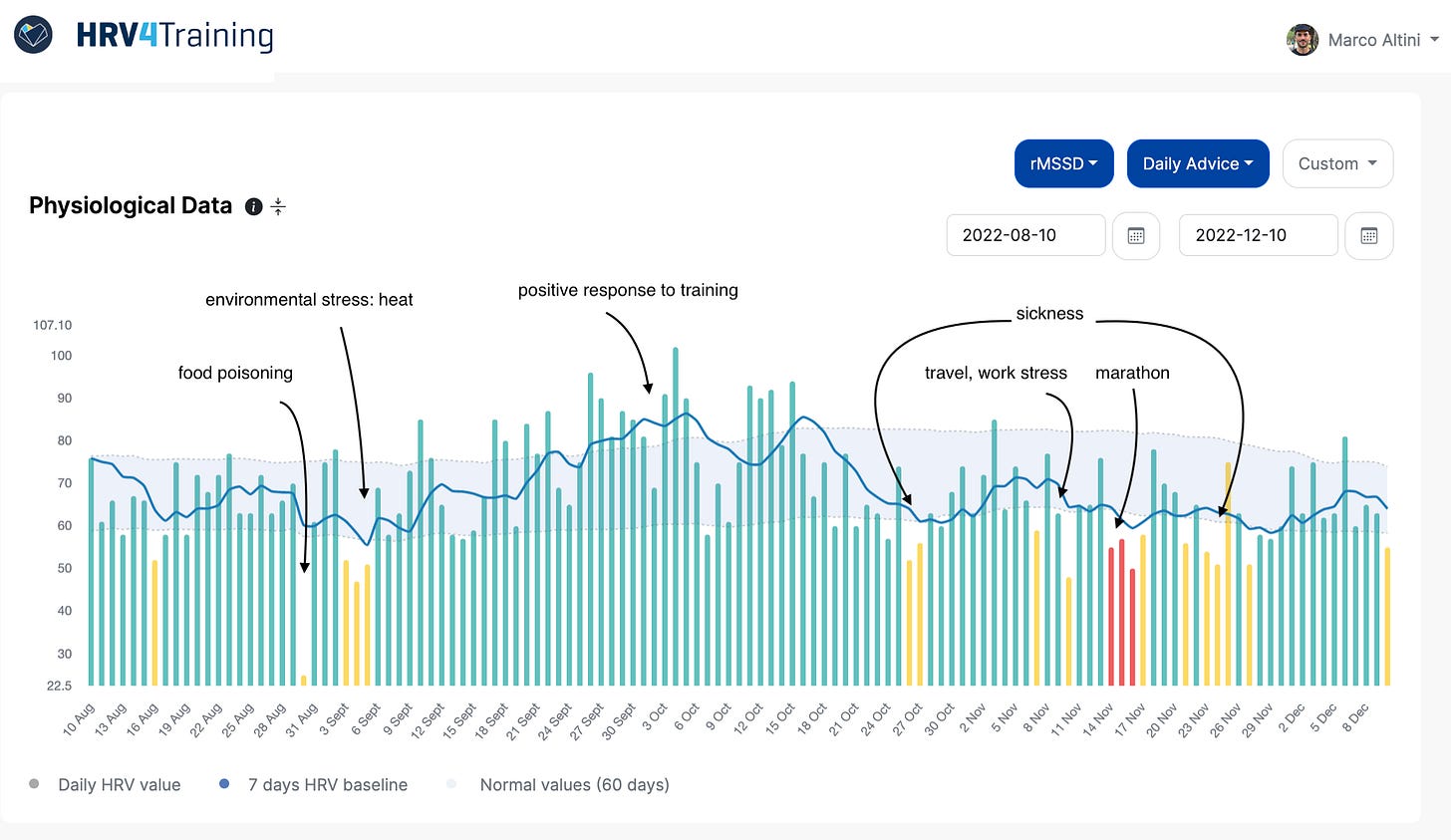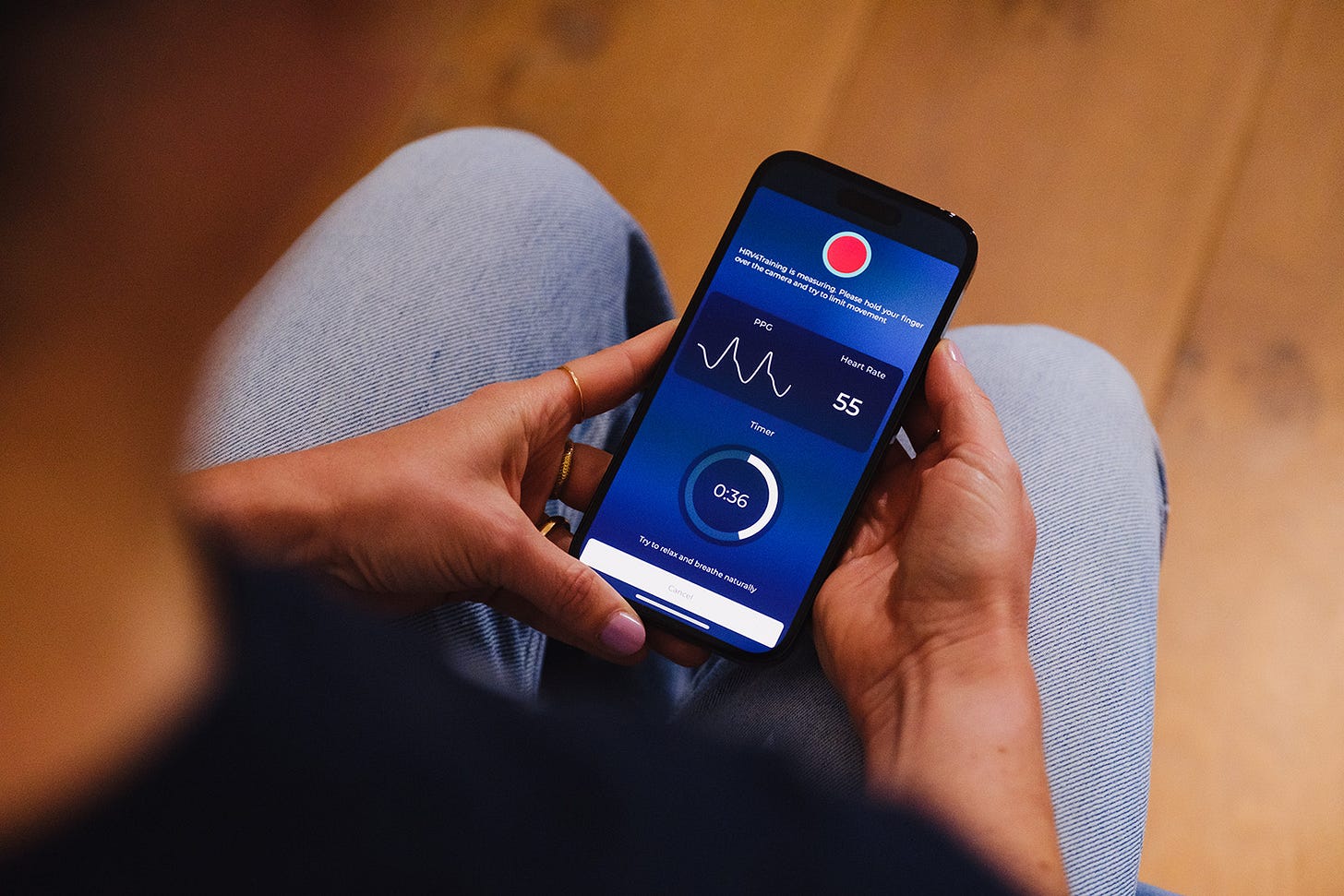[Q&A] Why Should We Not Use Slow Breathing During a Morning Measurement if it Increases Our HRV?
On the different uses of HRV, assessing our resting physiology or training the parasympathetic system.
This is a common question, especially when learning about the physiological basis of HRV and/or biofeedback exercises. Given that slow breathing increases HRV acutely, we might think that’s a good thing to do when measuring our HRV.
However, the goal of a morning HRV measurement is to capture your body's baseline physiological state under normal, resting conditions. If you practice slow, controlled breathing, you artificially manipulate your HRV, which defeats the purpose of tracking your underlying physiological stress level using HRV.
Keep in mind also that your goal is not to measure your “highest HRV” (a rather useless data point) but to measure HRV in a known, repeatable context so that you can compare it with your historical data each day, and determine if you have responded positively to the various stressors you are facing.

What about slow breathing then?
If instead of assessing your baseline physiological stress level you want to use HRV as a feedback tool to possibly train your parasympathetic system using a slow breathing exercise, as in HRV biofeedback, then the ideal way to do that is to breathe at your resonant frequency, which is by definition the frequency that maximizes your HRV during such an exercise.
In this case, we can see the slow breathing exercise as a sort of positive stressor, hence something we can practice with whenever it fits in our day. This is something I discuss in greater detail here and you can try using the HRV4Biofeedback app.

Keep in mind that it is perfectly normal to be a bit more aware of our breathing when taking a morning measurement. Even if your breathing is a bit slower or deeper, that's fine. For example, protocols with guided breathing for resting measurements would still use 7-8 breaths-minute, which is much lower than our resting breathing rate normally, but far from a biofeedback exercise.
The important part is not to make an effort to take really slow and deep breaths as in a biofeedback exercise (closer to 5-6 / minute) - if you’ve tried this, you know how different it is. Slow breathing as in biofeedback is not something that happens naturally even when relaxing and being more self-aware, it's an actual exercise.
Typically with a few days or weeks of measurement, we easily establish a routine and protocol that is reproducible over time and similar each day, making the data meaningful.
To summarize:
For a morning assessment of your resting physiology, relax and breathe naturally
We do this just once per day, typically first thing in the morning. This is what we recommend doing when using HRV4Training.
To train your parasympathetic system via a biofeedback exercise, use slow breathing
We can do this anytime, outside of the morning assessment, as a positive stressor. The HRV4Biofeedback app includes a protocol to determine your resonant frequency so that you can be guided to breathe at that specific frequency (typically, near 5.5 breaths/minute, with a slightly longer exhale).
Marco holds a PhD cum laude in applied machine learning, a M.Sc. cum laude in computer science engineering, and a M.Sc. cum laude in human movement sciences and high-performance coaching.
He has published more than 50 papers and patents at the intersection between physiology, health, technology, and human performance.
He is co-founder of HRV4Training, advisor at Oura, guest lecturer at VU Amsterdam, and editor for IEEE Pervasive Computing Magazine. He loves running.
Social:




I usually just sit up in bed against my headrest a few minutes after waking up. Legs flat on the bed.
I try to breathe naturally.
Does this sound sensible, or should my feet be on the ground?
From my experience, my breathing first thing in the morning (sitting upright, at rest) is that I’m breathing at a naturally low rate anyway (but maybe not quite as slow and deliberate as when using your Biofeedback app). So what I’m sort of saying is that maybe the two readings aren’t very different anyway. Just my observation. Thank you for the articles (and the apps).